new posts in all blogs
Viewing: Blog Posts Tagged with: teens in trouble with the law, Most Recent at Top [Help]
Results 1 - 25 of 136
How to use this Page
You are viewing the most recent posts tagged with the words: teens in trouble with the law in the JacketFlap blog reader. What is a tag? Think of a tag as a keyword or category label. Tags can both help you find posts on JacketFlap.com as well as provide an easy way for you to "remember" and classify posts for later recall. Try adding a tag yourself by clicking "Add a tag" below a post's header. Scroll down through the list of Recent Posts in the left column and click on a post title that sounds interesting. You can view all posts from a specific blog by clicking the Blog name in the right column, or you can click a 'More Posts from this Blog' link in any individual post.
The Singing Bones. Shaun Tan. 2016. 208 pages. [Source: Library]
First sentence: There are stories, honed by the retelling, simplified by the people who recorded them and transmitted them, old stories, with the edges rubbed off them, like the pebbles on a beach, each story the perfect size and heft to send skimming over the water, or to use to strike an enemy. Folktalkes are like jokes: If they had a beginning, it is lost to us.
Premise/plot: The Singing Bones is a collection of photographs and one-page 'retellings' of Grimm fairy tales or folk tales. The photographs are of sculptures made by Shaun Tan. Gaiman, who wrote the introduction, probably says it better than I ever could: "They [the sculptures] feel primal, as if they were made in a long-ago age of the world, when the stories were first being shaped, and that perhaps the sculptures came first."
There are dozens of photographs. They do take center stage in this book. The words being almost like a brief but necessary interruption. The text does not summarize the fairy tale. The text is definitely on the literary side. The reader has to work to make connections and "see" the bigger story that both photograph and text tell.
My thoughts: I didn't actually love this one personally. But. Just because I don't love, love, love something doesn't mean that I don't recognize ART when I see it. This is a weighty 'literary' book that is definitely interesting and quirky. I think those who love it will really LOVE it.
This quote by Neil Gaiman was fabulous:
People need stories. It's one of the things that make us who we are. We crave stories, because they make us more than ourselves, they give us escape and they give us knowledge. They entertain
us and they change us, as they have changed and entertained us for thousands of years.
© 2016 Becky Laney of
Becky's Book Reviews
What is a Child? Beatrice Alemagna. 2016. Tate. 36 pages. [Source: Review copy]
First sentence: A child is a small person. They are only small for a little while, then they grow up. They grow without even thinking about it. Slowly and silently, their body grows taller. A child is not a child forever. One day, they change.
Premise/plot: "What is a Child?" That is the question asked and answered by author, Beatrice Alemagna. Her answers are thoughtful, and, at times poetic. She definitely takes the question seriously.
My thoughts: I really found myself loving the text. Here's a phrase that caught me: "The children who decide not to grow up will never grow up. They keep a mystery inside them." And another, "Children want to be listened to with eyes wide open."
While I loved the text, I didn't love the illustrations.
Text: 5 out of 5
Illustrations: 2 out of 5
Total: 7 out of 10
© 2016 Becky Laney of
Becky's Book Reviews
My Cat Copies Me. Yoon-duck Kwon. 2007. Kane/Miller. 40 pages. [Source: Review copy]
First sentence: My cat copies me. We tunnel under newspapers, and crouch behind doors. If I hide under the desk, or in the closet, she hides with me.
Premise/plot: A young girl loves, loves, loves her cat. The book shows the two interacting with each other--copying each other. It's a sweet, must-have for cat-lovers.
My thoughts: I absolutely LOVE, LOVE, LOVE this one. It's one of my favorite picture books that I've discovered since I began blogging ten years ago. I love the writing. I love the illustrations. I love that the first half shows the cat copying the girl, and that the second half shows the girl copying the cat.
Text: 5 out of 5
Illustrations: 5 out of 5
Total: 10 out of 10
© 2016 Becky Laney of
Becky's Book Reviews
The Cafe Mystery (The Whodunit Detective Agency #4) Martin Widmark. Illustrated by Helena Willis. 2003/2015. 80 pages. [Source: Library]
First Sentence: "Mmm, pastries!" said Maya. "Cakes and muffins! Yum," added Jerry. "Can you believe everything that's been happening in there?" asked Maya, gesturing toward Cafe Marzipan, Pleasant Valley's best bakery.
Premise/plot: Jerry and Maya are kid detectives with a new toy: a digital camera. And that camera will come in handy for their next case. The bakery has suffered several robberies in the past year. No one has been able to figure out who the robber is. The robber just happens to hit every time there is a large amount of cash in the cash register. (An event that isn't all that common.) Can Jerry and Maya figure out which of the employees is working with the robber...and why?
My thoughts: I like this series. I do. I am enjoying spending time in Pleasant Valley. Jerry and Maya are very good at what they do.
© 2016 Becky Laney of
Becky's Book Reviews

By:
Becky Laney,
on 8/2/2016
Blog:
Becky's Book Reviews
(
Login to Add to MyJacketFlap)
JacketFlap tags:
friendship,
J Fiction,
international literature,
J Mystery,
2003,
early chapter book,
library book,
2015,
books reviewed in 2016,
Add a tag
The Circus Mystery (The Whodunit Detective Agency #3) Martin Widmark. Illustrated by Helena Willis. 2003/2015. 80 pages. [Source: Library]
First sentence: It was summertime in the town of Pleasant Valley. The sun had been shining brightly all day, and a gentle breeze rustled through the leaves of the trees in town.
Premise/plot: Jerry and Maya are two kids with a detective agency. A circus is coming to town. This circus has a bad reputation, however. Whatever towns the circus visits, a series of robberies and thefts occur. They have every reason to believe that their town will be no different, that the thief will rob people in the crowd. The police chief and Jerry and Maya attend both performances of the circus in order to see if they can solve the case.
My thoughts: I like this series well enough. Early chapter books are key in reading development. And who doesn't like a good series? Kids need series books; they need the predictability and the formulaic structure. I would definitely recommend the series.
© 2016 Becky Laney of
Becky's Book Reviews

By:
Becky Laney,
on 7/25/2016
Blog:
Becky's Book Reviews
(
Login to Add to MyJacketFlap)
JacketFlap tags:
J Fiction,
international literature,
J Mystery,
2014,
2002,
early chapter book,
library book,
books reviewed in 2016,
friendship,
Add a tag
Diamond Mystery (The Whodunit Detective Agency #1). Martin Widmark. Illustrated by Helena Willis. 2002/2014. 80 pages. [Source: Library]
First sentence: The streets were empty in the little town of Pleasant Valley.
Premise/plot: Jerry and Maya are classmates and friends who have opened a detective agency out of Maya's basement. They live in the small, quaint town of Pleasant Valley. The book opens with Mohammed Caret hiring these two child detectives to find out who is stealing diamonds from his shop. Their cover will be that he has hired these two children to do some light cleaning and run a few errands for him. They meet the three employees that work for him. And after a day of close observation, they are ready to solve the case.
My thoughts: I liked this one. I did. It's an early chapter book. I'd say just about right for second graders. It's the first in a mystery series for children. It has been translated into English from the Swedish.
© 2016 Becky Laney of
Becky's Book Reviews
Doctor Zhivago. Boris Pasternak. Translated by John Bayley. 1957. 592 pages. [Source: Library]
Doctor Zhivago is one of those books that I've "been meaning to read" for years now. Once I decided to actually read it, it took me just five days. "Actually" is a great little word, I've found.
So is the book like the movie? Or. Is the movie like the book? The book is a lot more complex than the movie, in my opinion. The movie seems to make everything about Dr. Zhivago and Lara, and the depths of their oh-so-amazing love. That is not the case in the book. (That's not to say that Lara isn't one of the major characters in the book, but, the book doesn't revolve around her.)
So essentially, the novel covers a little over three decades of Russian history. And those three decades are turbulent, bloody, terrifying, cruel. Probably three-quarters of the novel is set between the years 1910-1920.
If you come to the novel expecting a ROMANCE, then, chances are you'll be bored. It is "about" so much more than how a man feels about a woman.
Featured prominently in the novel: war, politics, revolution, religion, philosophy, economics, ethics, friendship, and, perhaps then love, romance, marriage, and family.
The main character is Doctor Zhivago (Yurii Andreievich Zhivago; aka Yura). Readers are first introduced to him at his mother's funeral. They learn that his father abandoned him and his mother. He'll be looked after by an uncle (Uncle Kolia). (This definitely varies from the movie.) As a teen, he and a friend (Misha Gordon) live with the Gromekos family. Yura later marries into this family, marries Tonia Gromeko. The start of World War I in 1914 disrupts his happy home.
Lara (Larisa Feodorovna Guishar) is another main character. While in the movie she is without a doubt the one and only love of Dr. Zhivago's life, in the book she plays a subtler role perhaps. Readers do spend some time with her through the decades. But then again readers spend a good amount of time with Tonia as well.
There is a third woman in Dr. Zhivago's life. A woman that the movie fails to portray at all. His "third wife" Marina (Marinka). He spends the most time (day-to-day, routine) with this 'third' family. They have two children together, and, he's there for the raising of them for the most part.
Some of his friendships are stabler than his love life. Though to be honest, this isn't completely his fault! Like when he's compelled (kidnapped) into the army during the Revolution. He was forcibly separated from his family, from returning to his family. (Part of me does wonder, if he hadn't been on the road--returning from the town to his country farm, returning from seeing Lara-- would he have been kidnapped? Would they have sought him anywhere he happened to be, since they knew there was a doctor in the region?) After he escapes, and the escape isn't quick in happening, he learns that his family has been deported to France. He's not exactly able to join them, and, yet, one wonders once again...IF he could join them, if he was granted permission from the country and allowed to leave Russia, and if he had the money to do so...would he? Or would he choose to remain in Russia and start a new life with Lara.
The story and the drama are certainly complex enough. At times I felt the characters were complex as well. At other times, I thought they were a bit flat and idealistic. I never really felt like I could "understand" the characters--understand their thought processes, motivations, and such.
I'm not sure I "liked" any of the characters in the traditional sense. But at the same time, I felt the story compelling enough. Especially if you go into it not expecting a romance. Plenty of tragedy, I suppose, if you want to look at it like that.
I don't think Dr. Zhivago's life turned out like he planned or hoped or dreamed. His life was interrupted and disrupted by outside forces, perhaps. In some ways, Doctor Zhivago reminded me of Gone With The Wind.
I am glad I read it. Have you read it? What did you think?
© 2016 Becky Laney of
Becky's Book Reviews

By:
Becky Laney,
on 2/9/2016
Blog:
Becky's Book Reviews
(
Login to Add to MyJacketFlap)
JacketFlap tags:
J Fiction,
J Fantasy,
international literature,
children's classic,
MG Fiction,
library book,
MG Fantasy,
1954,
2015,
books reviewed in 2016,
Add a tag
Mio, My Son. Astrid Lindgren. 1954/2015. NYR Children's Collection. 184 pages. [Source: Library]
Here's how Mio, My Son begins: "Did you listen to the radio on October 15th last year? Did you hear the news about a boy who disappeared? This is what it said: 'Police in Stockholm are searching for a nine-year-old boy missing from his home, at 13 North Street, since 6.P.M. two days ago. Karl Anders Nilsson has light hair and blue eyes. At the time of his disappearance he was wearing brown shorts, a gray sweater, and a small red cap. Anyone with more information on his whereabouts should contact the police.'"
I don't even know why, but, something about that opening paragraph grabbed me. I wanted to read more. I knew nothing about the book, but I knew I wanted to make time to read it. (When was the last time you got hooked into a book?! I'd love to hear about it!)
So, you might think based on the opening paragraph that Mio, My Son was realistic fiction. That it was perhaps a bit on the dark side, and, that it would perhaps involve a kidnapping. Unless you've read reviews of it, you might not be expecting to find a FAIRY-TALE like fantasy novel set not in the 'real world' but in Farawayland. I know I was surprised--quite pleasantly--to find that Mio, My Son IS a fantasy novel.
The hero of this one is a boy sometimes called 'Andy' but usually called MIO. He is the 'missing boy.' He is narrating his own story, and doing it in his own way. The narrative voice is quite strong, in my opinion.
Now, I will warn readers that sometimes Mio repeats himself. For example, "I must go there to fight Sir Kato, though I was so scared, so scared." Some readers might find this an unforgivable sin. I don't. Not in this case at least. I didn't find it as annoying as a written stutter, for example. Perhaps because it mainly occurs when Mio is thinking about or talking about Sir Kato. It doesn't occur on every page.
So essentially, the book is Mio's adventures in Farawayland. The first half of the book is mostly light and joyous. Nothing heavy or dark. The second half of the book, however, is much more dramatic and dark. THINK Lord of the Rings only for a much younger audience. Mio has a mission to accomplish, something that only HE, as a royal son, can do. And it is seemingly impossible and very daunting. Mio must make up his mind to be brave and determined and risk everything for his mission.
Mio is not alone. He has a best friend, Pompoo, and a horse, Miramis. And, there is, of course, his father THE KING, who I personally LOVED.
So did I like this one? Did I love it? Did I love, love, LOVE it? I think I definitely loved it. I loved it for the narrative, for the descriptive language, for the imagery. I really loved the imagery of the Bread That Satisfies Hunger and the Well That Quenches Thirst. Also I really liked the Well That Whispers at Night. The first two images reminded me of Scripture. (John 4:13-14; John 6:35) The sacrificial nature of the mission also reminded me of Scripture. I'm not convinced it can only, always be read as an "allegory" (think The Lion, The Witch, and the Wardrobe). But as a Christian reader, I saw how it could be interpreted that way.
I think anyone can appreciate the imagery of the Well That Whispers At Night:A whisper began deep, deep down in the well. It was such a strange voice, unlike any other voice. It whispered fairy tales. They weren't like any other fairy tales, and they were the most beautiful stories in the whole world. There was almost nothing that I loved more than listening to fairy tales, so I lay down flat on my stomach, leaning over the edge of the well to hear more and more of the voice that whispered. Sometimes it sang too, the strangest and most beautiful songs.
"What strange kind of well is this?" I said to Totty.
"A well full of fairy tales and songs. That's all I know," said Totty. "A well full of old stories and songs that have existed in the world for a long time, but that people forgot a long time ago. It is only the Well That Whispers at Night that remembers them all."
Here's another favorite passage:
I understood then for the first time that I never needed to be afraid of my father the King, that whatever I did he would always look at me kindly, like he was doing now as he stood there with his hand on the Master Rose Gardener's shoulder and with all the white birds flying around him. And when I understood him, I was happier than I'd ever been before in my life. I was so glad that I laughed quite hard.
© 2016 Becky Laney of
Becky's Book Reviews
Gut: The Inside Story of Our Most Underrated Organ. Giulia Enders. Illustrated by Jill Enders. 2014/2015. Greystone Books. 288 pages. [Source: Library]
Words to describe this one: Thrilling, Fascinating, Informative, Fascinating.
Gut by Giulia Enders is a compelling, action-packed nonfiction read that I found almost impossible to put down. I read it in two sittings. And I found myself stopping only to share little bits of information with others. My goal: to try to get everyone to read this one! Why? Because I think people NEED to know how the body works, and how ESSENTIAL gut-health is for HEALTH.
Yes, primarily, the book is about "the gut" (digestion from start to finish), but, it is also about how the whole body functions or malfunctions.
The last third of the book focuses on microbes, or gut flora. This section of the book is so absorbing and enlightening. And part of what makes it so exciting is how much is still not known, how NEW this research still is, and how promising it looks to be. There is still so much we don't know, don't understand, about how our bodies function, and what causes things like diseases and obesity. The link between gut microbes and obesity is certainly attention-grabbing.
From start to finish, I found Gut to be a great read. The jacket copy says that the narrative has "quirky charm" and I quite agree. You can
watch this video as well.
Table of Contents:
Gut Feeling
- How Does Pooping Work? And Why That's An Important Question
- The Gateway to the Gut
- The Structure of the Gut
- What We Really Eat
- Allergies and Intolerances
The Nervous System of the Gut
- How Our Organs Transport Food
- Reflux
- Vomiting
- Constipation
- The Brain and the Gut
The World of Microbes
- I Am An Ecosystem
- The Immune System and Our Bacteria
- The Development of the Gut Flora
- The Adult Gut Population
- The Role of the Gut Flora
- The Bad Guys--Harmful Bacteria and Parasites
- Of Cleanliness and Good Bacteria
© 2015 Becky Laney of
Becky's Book Reviews
The Big Princess. Taro Miura. 2015. Candlewick Press. 40 pages. [Source: Review copy]
First sentence:
Once upon a time in a land far, far away, there lived a king and queen. The king and queen had no children of their own, but they had a beautiful garden, full of all kinds of flowers. It was their pride and joy, and each blossom was tended with the greatest love and care. Premise/plots: A childless royal couple is overjoyed when their greatest dream comes true: at last a child to call their own, a princess. But this princess is under a spell. She is tiny now, but, she'll keep growing and growing and growing until the spell is broken. And the king and queen are warned that they NEED to break the spell for the good of them all--the whole kingdom. Can they break the spell in time?
The Big Princess was originally published in Japan in 2013.
My thoughts: I liked this one. I've read it three times now, and, I've reacted a bit differently each time. But overall, I think I do like it. It reads like a traditional fairy tale. It may not have all the expected elements--the presence of fairies, for example--but if you enjoy a good fairy tale, this original story may satisfy. Still, I have to warn you that this one is a bit odd.
Text: 4 out of 5
Illustrations: 3 out of 5
Total: 7 out of 10
© 2015 Becky Laney of
Becky's Book Reviews

By:
Becky Laney,
on 7/4/2015
Blog:
Becky's Book Reviews
(
Login to Add to MyJacketFlap)
JacketFlap tags:
2015,
2015 Cybils-eligible,
books reviewed in 2015,
poetry,
picture books,
international literature,
J Poetry,
Candlewick,
review copy,
Add a tag
Out and About: A First Book of Poems. Shirley Hughes. 1988/2015. Candlewick Press. 56 pages. [Source: Review copy]
I really enjoyed reading Shirley Hughes Out and About: A First Book of Poems. These poems reminded me that I do like poetry, good children's poetry, about subjects that are easy to relate to. These poems celebrating living life in all four seasons: spring, summer, autumn, and winter. These poems celebrate spending time outdoors. Best of all, these poems are kid-friendly.
For example, "Mudlarks"I like mud.
The slippy, sloppy, squelchy kind,
The slap-it-into-pies kind.
Stir it up in puddles,
Slither and slide.
I do like mud.
and "Water"
I like water.
The shallow, splashy, paddly kind,
The hold-on-tight-it's-deep-kind.
Shlosh it out of buckets,
Spray it all around.
I do like water.
I like this poetry collection because it's joyful. These poems capture joyous moments. Well, for the most part! I suppose the poem about being stuck in bed SICK isn't capturing joy, it's capturing frustration. But still. These poems are easy to relate to.
© 2015 Becky Laney of
Becky's Book Reviews
Hippu. Oili Tanninen. 2015. Tate Publishing (Abrams) 32 pages. [Source: Review copy]
First sentence: Hippu looks out of the window and sees a dog.
Premise/plot: Hippu is a small, square picture book originally published in Finland in 1967. Hippu, a mouse, meets Heppu, a dog, and they become good friends. The book is about what the two do together. The text is very matter-of-fact. For example, "Hippu sleeps. Heppu sleeps. Good night."
My thoughts: Hippu is a strange little book, in a way, certainly different from what is currently being published. But just because it's strange doesn't mean it lacks charm. The illustrations are simple, yet bold and striking. (The only colors in the book are red, white, and black.)
Text: 3 out of 5
Illustrations: 3 out of 5
Total: 6 out of 10
© 2015 Becky Laney of
Becky's Book Reviews

By:
Becky Laney,
on 6/3/2015
Blog:
Becky's Book Reviews
(
Login to Add to MyJacketFlap)
JacketFlap tags:
J Fiction,
J Fantasy,
international literature,
Animal fantasy,
children's classic,
MG Fiction,
1918,
MG Fantasy,
book I bought,
books reviewed in 2015,
books reread in 2015,
Add a tag
The Magic Pudding. Norman Lindsay. 1918. 144 pages. [Source: Bought]
This is a frontways view of Bunyip Bluegum and his Uncle Wattleberry. At a glance you can see what a fine, round, splendid fellow Bunyip Bluegum is, without me telling you. At a second glance you can see that the Uncle is more square than round, and that his face has whiskers on it. Looked at sideways you can still see what a splendid fellow Bunyip is, though you can only see one of his Uncle's whiskers. Observed from behind, however, you completely lose sight of the whiskers, and so fail to realize how immensely important they are. In fact, these very whiskers were the chief cause of Bunyip's leaving home to see the world, for as he often said to himself--'Whiskers alone are bad enoughAttached to faces coarse and rough;But how much greater their offence isWhen stuck on Uncles' countenances.'Several years ago, I read Norman Lindsay's The Magic Pudding. I loved it. I did. I really LOVED it. I found it to be charming and delightful and wonderful. Part of the charm comes from the illustrations. (It is very important to read The Magic Pudding WITH illustrations.) Part of it comes from the songs or the poetry sprinkled throughout the novel. And then there's just the silliness--the absurdness--of the story itself.
The Magic Pudding stars a koala bear, Bunyip Bluegum. He goes off on his adventures primarily because he's tired of his Uncle Wattleberry's whiskers. He soon meets some new friends. Bill Barnacle is a sailor traveling with Sam Sawnoff (a penguin) and Albert (a pudding). Albert is THE magic pudding. And the adventures--in four slices, I believe--center around Albert and those that would steal him away. In each adventure, the three friends are in danger of losing their pudding to pudding thieves. Each adventure seems just a bit sillier than the one that came before. It may seem ridiculous, but, the book truly is a delight to read. One of the early songs from the book, it was one of the early indicators that it would be LOVE, LOVE, LOVE.
Dear me,' he said, 'I feel quite faint. I had no idea that one's stomach was so important. I have everything that I require, except food; but without food everything is rather less than nothing.
I've got a stick to walk with.
I've got a mind to think with.
I've got a voice to talk with.
I've got an eye to wink with.
I've lots of teeth to eat with,
A brand new hat to bow with,
A pair of fists to beat with,
A rage to have a row with.
No joy it brings
To have indeed
A lot of things
One does not need.
Observe my doleful plight.
For here I am without a crumb
To satisfy a raging tum--
O what an oversight!'
The Puddin' Owners' Anthem:
The solemn word is plighted,
The solemn tale is told,
We swear to stand united,
Three puddin'-owners bold.
When we with rage assemble,
Let puddin'-snatches groan;
Let puddin'-burglars tremble,
They'll never our puddin' own.
Hurrah for puddin-owning,
Hurrah for Friendship's hand,
The pudding'-thieves are groaning
To see our noble band.
Hurrah, we'll stick together,
And always bear in mind
To eat our puddin' gallantly,
Whenever we're inclined.
© 2015 Becky Laney of
Becky's Book Reviews
Hoot Owl Master of Disguise. Sean Taylor. Illustrated by Jean Jullien. 2015. Candlewick. 48 pages. [Source: Review copy]
First sentence: Watch out! I am Hoot Owl! I am hungry. And here I come!
Premise/Plot: Hoot Owl is HUNGRY, very, very HUNGRY. He's a bit proud that he's a master of disguise. Surely by using his disguises he can satisfy his hunger, right? He spots his prey, he gets in disguise, and.... Well, you need to read the book!
My thoughts: This one is very well-written. I really liked the text. It's very descriptive:
"The night has a thousand eyes, and two of them are mine. I swoop through the bleak blackness like a wolf in the air."
and
"The shadowy night stretches away forever, as black as burnt toast."
It is also clever and witty in places. It kept me smiling. I won't spoil the surprise, but, I quite liked the ending!
Overall, I definitely liked the text and the illustrations. Have you read this one? What did you think?
Text: 4 out of 5
Illustrations: 4 out of 5
Total: 8 out of 10
© 2015 Becky Laney of
Becky's Book Reviews
The Ship of Brides. Jojo Moyes. 2005/2014. Penguin. 464 pages. [Source: Library]
Did I love absolutely everything about Jojo Moyes' The Ship of Brides? No, I can't say that I did. But I enjoyed it enough to read it in two days. I'll start with what I loved.
I loved the subject. I loved the idea of reading about a group of women--war brides--sailing together into the unknown. The book is about a ship full of Australian women--all war brides--sailing to England in 1946. It isn't any ship either. It's an aircraft carrier. The potential to mingle with the navy is definitely there, though obviously discouraged. There are over 600 women on board, though readers only get close to four women who share a room: Jean, Avice, Margaret, and Frances. They are sailing into the unknown in a way because they've never been to England, they've never met their in-laws, and they haven't seen their husbands in months or even years. Take into consideration, that some of these couples only knew each other a few weeks before they got married, and, yes there is plenty of unknown ahead. Even if they felt like they *knew* their husbands when they got married, they don't know how the war has changed them, if the war has changed them. The time on the ship is an in-between time: the first taste of a big change in all their lives. Will they be happy? Will it all work out? Are they still loved? Are they still wanted? Several women receive messages--telegrams, I believe-telling them NOT to come.
I liked the narration, especially of the time on the ship. The days/weeks are chronicled, and, one gets a sense of the experience, of the journey. The anxiety, the awkwardness, the heat, the opportunities, the stresses, etc. I thought the setting was well done, for the most part.
Did I love the characterization? Not as much as I hoped initially. I don't know if there was any one character that I loved. And some of the characterization felt a bit uneven.
What I didn't quite love was the framework. The beginning and ending felt a little off to me. Readers first meet a grandmother and a granddaughter on their trip in India. The two just happen to stumble upon a ship about to become scrap. It is THE ship, and it overwhelms the grandmother to see it. The rest of the book is about the four women--really, just three women if I'm honest--and tries, I suppose, to keep readers guessing which of the three is the grandmother of the future. The ending is part of that framework: readers finally knowing how it all fits together.
I liked it. I'm glad I read it. I am. I'm interested in the subject. I would be happy to read more books like it. But it wasn't love for me.
© 2015 Becky Laney of
Becky's Book Reviews
The Unlikely Pilgrimage of Harold Fry. Rachel Joyce. 2012. Random House. 320 pages. [Source: Library]
The novel opens with Harold Fry receiving a letter in the mail from a former friend, Queenie Hennessy; it is a goodbye letter. Though they haven't seen each other in decades, she wanted to tell him that she was dying of cancer. He's shocked, to put it mildly. Though in all honesty he doesn't think of her all that often, now that her letter is in his hands, he is remembering the woman he once worked with and what she once did for him. He writes a reply and prepares to mail it, but, on his way to the mailbox, it doesn't seem enough, not nearly enough. His reply is so short and inadequate. So after a brief conversation with a stranger about cancer, he decides to have a little faith and embark on a pilgrimage. He will walk to see Queenie in her hospice home. In his mind, logical or not, he's connected the two: walking and healing. He'll do the walking, but will it work?
The Unlikely Pilgrimage of Harold Fry is a character-driven, journey-focused read. From start to finish, readers are given a unique opportunity to walk with Harold Fry, to really get inside his head and understand him inside and out. It's a bit of a mystery as well. Since readers learn things about Harold chapter by chapter by chapter. The book is very much about Harold making sense of Harold: that is Harold coming to know himself better, of making peace if you will with the past and present.
I liked the book very much for the chance to get to know Harold and even his wife. (At first, his wife thinks he's CRAZY. Crazy for thinking up the idea, crazier still for acting on it. It just does not make any sense at all to her. WHY WALK OVER 500 MILES TO SEE A FORMER COWORKER YOU HAVEN'T SEEN IN TWO DECADES?!
It was a very pleasant read. Harold meets people every single day of his walk, and the book is a book of conversations.
It is set in England.© 2015 Becky Laney of
Becky's Book Reviews

By:
Becky Laney,
on 2/1/2015
Blog:
Becky's Book Reviews
(
Login to Add to MyJacketFlap)
JacketFlap tags:
Historical Fiction,
series books,
international literature,
2012,
2010,
2014,
2011,
library book,
adult mystery,
2013,
books reviewed in 2015,
Add a tag
Dying in the Wool. (Kate Shackleton #1) Frances Brody. 2009/2012. Minotaur Books. 368 pages. [Source: Library]
Did I love Dying in the Wool? No, not really. I had hoped to love it since it's a cozy mystery set in England in the 1920s. But I merely liked it instead of LOVING it.
The novel introduces the private detective, Kate Shackleton. She's a widow; her husband was a soldier who died during the war. Since the war, she's helped--usually without a fee--people find out what happened to their missing loved ones. Her other hobby is photography.
In Dying in the Wool, Kate Shackleton has her first paying case to solve. Her friend--her acquaintance--Tabitha is getting married in a month or two. Her father, a mill owner, disappeared in 1916. Some people strongly feel he's dead--likely suicide. Other people feel strongly that he's just ran off, probably with a woman to start a new life. Tabitha wants answers. Are the people in the village of Bridgestead keeping secrets? And can Kate and her ex-policeman partner (Jim Sykes) get people to talking? Will this case be easy or difficult? Is it dangerous to ask the wrong questions even after all these years?
I liked the setting just fine. I did. I liked Kate Shackleton and her partner, though I wish we'd had more of him. Would I have liked this one more if I'd found more of the characters likable? Perhaps. Probably. I really just felt this one had so many despicable characters in it. I hardly liked anyone! And it is NOT a clean read. I was hoping it would be a bit cleaner. That probably kept me from loving this one too.
Medal for Murder. (Kate Shackleton #2) Frances Brody. 2010/2013. Minotaur Books. 432 pages. [Source: Library]
Did I love Medal for Murder? I think maybe I did. At the very least I liked it so much more than the first book in the series. (I think I might have not been in the right and proper mood to enjoy/appreciate Dying in the Wool.)
Kate Shackleton and Jim Sykes have been asked by a pawn shop owner to investigate a robbery, and to discreetly visit the owners of the stolen (pawned) items. Sykes visits some. Kate visits some.
But Kate's passion isn't with finding missing things, it's finding missing persons. And within a day or two of her arrival, she does indeed have a person to track down.
I may have liked this one more because of its theatrical themes. The missing girl--woman, I should say--is an actress. She disappeared after the last performance of the play at the local theatre. Her disappearance wasn't the only strange and unhappy event that night....
I really did enjoy this one very much. It was a quick read! I really started to like the characters, especially Kate and Jim and Inspector Charles.
Murder in the Afternoon. (Kate Shackleton #3) Frances Brody. 2011/2014. Minotaur Books. 400 pages. [Source: Library]
I am definitely enjoying this mystery series. I may have started the series hesitant, but, by the third book, it is love. I've enjoyed each book in the series a little bit more.
Mary Jane Armstrong comes to Kate Shackleton early one morning begging her to help find her missing husband. Her daughter, Harriet, had found him dead on Saturday evening. However, by the time she'd returned with an adult--the body was gone. NO ONE in their town/village had believed her. "She's just a girl after all...and everyone knows that girls make up stories for fun." That's the logic that Kate Shackleton is up against. Kate does believe Harriet's story. And though she has the mother's support--seemingly strong support--in the case, she's having a hard time of it since no one in the community wants to talk to her about the supposed crime.
But as readers can imagine, things are not as they appear. Danger remains so long as the murderer remains free.
This one is a nice addition to the series. Readers learn more about Kate's background. And Inspector Charles is definitely coming to be a love interest!
© 2015 Becky Laney of
Becky's Book Reviews
The Girl With The White Flag. Tomiko Higa. Translated by Dorothy Britton. 1989. 130 pages. [Source: Bought]
The Girl with the White Flag is the story of the author's childhood in war-time Japan. It begins by giving the reader ample background into the time and culture and place.
One of the first events she shares with readers is the death of her mother. She then relates what life was like with her father, two older sisters, and her older brother. This portion is hard to navigate. I think in some ways it is just as hard for modern readers to understand the family life--the harshness, the strictness, the discipline, as it is to understand the monstrosities of war and soldiers and starvation. (Or maybe that's just my take on it.)
About halfway through the narrative, the father disappears. He was on his somewhat routine mission of delivering food to the Japanese soldiers, but on this occasion he never returned home. The four children are left to fend for themselves. The American soldiers have just begun their invasion, their battle to capture this island. The children become refugees and the fight to survive has begun. The children ranged in age from 17 to 6. Somewhere along the way, however, two things happen--big things--that make this event even scarier: 1) Their brother dies one night from a stray bullet. 2) Within a few days of burying their brother, our narrator--the six/seven year old girl becomes lost--separated--from her sisters.
The book recounts what it was like to be seven and alone and wandering in and out of danger. There was no safe place. Not really. Japanese soldiers weren't "safe." In fact, in her brief encounters with them she was almost killed. No, being near soldiers wasn't safe. The only "safe" soldier was a dead soldier. She did in fact scavenge around the dead soldiers looking for food.
Her will to survive was strong. Her stamina incredible in my opinion. The sights. The sounds. The smells. All surrounded her. Could have potentially traumatized her and paralyzed her into inaction.
If there is power in the Girl with The White Flag it is in its rawness, its simplicity, its boldness when it comes to being straightforward and honest. The story is incredible is powerful because it's true. Here is an eyewitness account of what it means to be seven and a refugee in a war zone. It can be brutal. It can be intense. But there is more to it than that.
I found The Girl with The White Flag to be an incredibly compelling read, a must-read for adults.
© 2015 Becky Laney of
Becky's Book Reviews

By:
Becky Laney,
on 1/4/2015
Blog:
Becky's Book Reviews
(
Login to Add to MyJacketFlap)
JacketFlap tags:
books reviewed in 2015,
adult fiction,
series books,
international literature,
2012,
2011,
library book,
adult mystery,
2013,
Add a tag
Twelve Drummers Drumming. Father Christmas Mystery #1. C.C. Benison. 2011. Doubleday. 384 pages. [Source: Library]Twelve Drummers Drumming is the first in the Father Christmas mystery series by C.C. Benison. Tom Christmas, the hero, is a vicar in the village of Thornford Regis. He's a widower with a nine year old daughter, Miranda. Both are still healing and adapting. Tom's wife was murdered. So why settle in Thornford? Tom and his daughter were visiting his sister-in-law and her husband about a year before the novel opens. There was a funeral in the village that day, but, the vicar was missing. Tom Christmas (Father Christmas as people can't help calling him!) stepped in and performed the funeral service. When the position became available, Tom wanted the job for keeps. But village or hamlet life isn't all cozy. There are a few mysteries to be solved. And since Inspector Bliss and Inspector Blessing aren't quick to solve cases, Tom's skills come in handy. Tom is good at observing things, and, it helps that people can't seem to help confiding in him and telling their secrets.
So there are two murders to solve in Twelve Drummers Drumming. I won't say a word about the crimes and the clues. I hate having mysteries spoiled! Just as important as the clues, if not MORE important than the clues are the characters. That I can safely comment on! I really enjoyed the depth of the characters!
Overall, I would say that Twelve Drummers Drumming is an entertaining and satisfying read. I enjoyed spending time with the characters. I would recommend it!
Eleven Piper Piping. Father Christmas Mystery #2. C.C. Benison. 2012. Delacorte. 474 pages. [Source: Library] I think I enjoyed the second Father Christmas mystery even more than the first. Tom Christmas is the vicar of Thornford Regis. He is also the chaplain to a traditional Scottish pipe band, The Thistle But Mostly Rose South Devon Pipe Band. While Tom's daughter, Miranda, is having a sleepover, and his housekeeper, Madrun, is panicking about a failed yorkshire pudding, Tom Christmas is off--for better or worse--to the Burns Supper. But the weekend is problematic. The horrible weather--the blizzard-like conditions--means that half the band is unable to come, which leaves us with ELEVEN pipers piping. But while half the band is unable to make it through the storm, there is one unexpected guest that shows up at the local hotel where the Burns supper is being held. That guest is Judith Ingley, a retired nurse. Though usually women aren't allowed to attend, they don't turn her away in the storm.
Eleven Pipers Piping IS a murder mystery. So I won't share any details about the crime(s) or victim(s). I will say that the reader gets to spend plenty of time with Father Christmas as he interacts with the whole village before, during, and after the crime. I really enjoyed the setting very much. The characterization didn't disappoint.
Ten Lords A-Leaping. Father Christmas #3. C.C. Benison. 2013. Delacorte. 512 pages. [Source: Library]I wish I could give a rating for the first half and a rating for the second half.
Ten Lords A-Leaping is the third book in the Father Christmas series. In Eleven Pipers Piping, Father Christmas brings up a fund raiser idea to help pay for repairs on the church building. It involves sky diving. Ten Lords A-Leaping sees the event through. It is NOT set in Thornford Regis, unfortunately. I think I would have enjoyed it more if it had been.
So. The novel opens with the sky diving. In his jump, Tom has a little accident in the landing with his ankle, an accident that changes his plans and prolongs his visit in that part of the country. He is asked to stay over at Eggescombe Park. First, he's stuck there because of his own injury, then, he's stuck there because of a murder.
I really found myself hating the first half of the book. The series has never been squeaky clean, previous titles in the series have had a few words now and then that keep it from being perfectly clean. Still, it wasn't enough to keep me from reading, from wanting to read on in the series. But Ten Lords A-Leaping turns smutty. And smut in a creepy, inappropriate way. To the book's credit, Tom ends up feeling disgusted by the end of the novel with his own experience. But still.
Even though I really disliked much of the beginning and middle, I kept reading. And the mystery aspects of the novel began to grow on me a bit. I can't say that I "liked" it better than the first two in the series. I can't even say that I "liked" the majority of the characters. There were plenty of despicable characters. I'd say there were more despicable characters than nice ones. But. That is part of the genre, I suppose.
I enjoyed this one enough by the end, but, honestly I was a bit disappointed with this one.
© 2015 Becky Laney of
Becky's Book Reviews
When Santa Fell To Earth. Cornelia Funke. Translated by Oliver Latsch. 1994/2006. Scholastic. 167 pages. [Source: Library]
I don't know what I was expecting exactly with Cornelia Funke's When Santa Fell to Earth. Was I disappointed with the reading experience? Not really. Funke's "Santa" may not have matched my expectations, but, once I got used to her take on "Santa" and his "elves," it worked fine for me. This book is certainly creative. It offers readers a) invisible reindeer, b) cursing elves, c) evil Nutcracker goons and d) chocolate santas. It is a very odd book in a way. Almost a Twilight Zone take on Christmas. (Especially about the BOOTS.)
The book begins with a failed escape of sorts. Niklas Goodfellow is a Santa on-the-run. He's been put on trial and unfairly sentenced. He isn't all on his own. There are a few elves and angels on his side in his caravan, a few who still "get" what Christmas is all about. But it's a dangerous time for them all. They may have initially escaped, but, they have crashed. They landed in small neighborhood. They may eventually get away BEFORE they're discovered, but, every day they remain, every day it takes to repair things increases the risk.
Charlotte and Ben are the kid heroes of When Santa Fell To Earth. They are the two that interact with Niklas Goodfellow and his angels and elves. They are the two that find the naughty reindeer, Twinklestar. They are the two that fight alongside Santa and his elves against the oh-so-evil Gerold Geronimus Goblynch.
The book is certainly interesting and entertaining. But it's also ODD.
© 2014 Becky Laney of
Becky's Book Reviews
I Pledge Allegiance. Pat Mora and Libby Martinez. Illustrated by Patrice Barton. 2014. Random House. 40 pages. [Source: Review copy]On Monday when I get to school, my teacher, Mrs. Adams asks, "Did your great-aunt pass her test?""Yes!" I say. "She is very smart." I tell my class all about my great-aunt. She is eighty years old, and my family calls her Lobo, which means "wolf" in Spanish. (She calls us her lobitos--her "little wolves.")Lobo studied very hard. She learned all about America. Inspired by her own aunt who became a citizen in her seventies, Pat Mora and Libby Martinez have crafted a lovely story of friendship between a young child and her great-aunt. While her great-aunt is preparing to become a citizen, to say the pledge of allegiance in a big ceremony, her young niece is preparing to lead the pledge of allegiance in her class. The two discuss what they love about the U.S.
I liked the focus on family. It was very sweet. A lot of the charm of this one is communicated through the illustrations.
Text: 3 out of 5
Illustrations: 4 out of 5
Total: 7 out of 10
Duck & Goose: Go To The Beach. Tad Hills. 2014. Random House. 40 pages. [Source: Review copy]"Don't you love it here, Duck?" Goose honked. The two friends relaxed in the early-morning sun and listened to the hum of the meadow. Butterflies flitted and grass swished in the breeze. "Yes, I do," Duck agreed. "Let's never leave," said Goose. Suddenly, Duck jumped up. "You just gave me the greatest idea, Goose!" he quacked. "Let's leave! Let's go away!"I enjoy Duck and Goose. I do. Perhaps I don't love these two as much as say Gerald and Piggie. But I definitely like this friendship. These two star in many books together. I can't say that Duck & Goose Go To The Beach is my absolute favorite of the series. (I enjoy others in the series more actually.) But it is a fun summer addition for Duck & Goose fans.
The book begins with Duck wanting desperately to go somewhere, to have an adventure. Goose is super hesitant. He likes home. He likes the familiar. Duck does persuade Goose to come along. By the end, Goose has definitely become more comfortable! But will Duck like where the adventure leads him?! He may not!!!
Text: 3 out of 5
Illustrations: 3 out of 5
Total: 6 out of 10
Peppa Pig and the Vegetable Garden. 2014. Candlewick Press. 32 pages. [Source: Review copy]Peppa Pig and her little brother, George, are playing at Grandpa Pig and Granny Pig's house. They love to help Grandpa Pig in the garden. If you enjoy the show Peppa Pig, chances are you'll enjoy reading the series of books based on the show. I know I do! In this book, Peppa Pig and her brother George are visiting their grandparents. They work in the garden. They plant seeds. They play in the garden. They pretend to be snails, butterflies, and worms. When Mummy Pig and Daddy Pig arrive, they pick blackberries. If you've seen the show, you know that usually means trouble! In this instance, it is Mummy Pig who ends up making a mess of things! The book concludes with a nice family meal.
Text: 3 out of 5
Illustrations: 3 out of 5
Total: 6 out of 10
Peppa Pig and the Great Vacation. Candlewick Press. 2014. 32 pages. [Source: Review copy]Peppa Pig is one of my favorite children's shows. It is. I love Peppa Pig and her brother George. I enjoy her parents Mummy Pig and Daddy Pig. I enjoy watching their adventures. The books which are based on the show can be great fun, but, they don't always match the quality or the charm of the show. I did enjoy Peppa Pig and the Great Vacation. But I didn't love it.
In Peppa Pig and the Great Vacation, Peppa and her family go on vacation. They do some hiking. They do some shopping. They have at least one picnic. (The family does love having picnics!) They go to the beach. Every day Peppa Pig calls home to see if Grandpa Pig and Granny Pig are properly watching her fish. Readers will see if they did a proper job by the end of the book!
Text: 3 out of 5
Illustrations: 3 out of 5
Total: 6 out of 10
Help! We Need A Title! Herve Tullet. 2014. Candlewick Press. 64 pages. [Source: Review copy]Hey! Someone's watching us!Guys, come here. Look at this.There are people here...and they've opened our book!Hi there.Who are you? What do you want?You're very sweet. Wow! So, what now?I think they would like a story.The reader catches the characters by surprise in Herve Tullet's new picture book. The illustrations, the characters, are an unfinished mess. They are. They know they are. They do not have a story ready to tell the reader. They know the reader expects a finished product, an actual story. But they do their best. They talk amongst themselves. They talk about what a book needs to work. Characters. Backdrops. A story or plot. Possibly a villain. But they're amateurs. What they need is a real author to help them. So they team up and surprise one. The author they choose, of course, is Herve Tullet. His photo is blended into the illustrations charmingly. He is willing to help them if they're willing for his story to be short and sweet.
This one is definitely creative and unique. I liked it. It was originally published in France.
Text: 3 out of 5
Illustrations: 3 out of 5
Total: 6 out of 10
Very Little Red Riding Hood. Teresa Heapy. Illustrated by Sue Heap. 2014. Houghton Mifflin Harcourt. 32 pages. [Source: Review copy]Very little Red Riding Hood was going to her Grandmama's for a sleepover. "I go see Gramma with cakes," said Very little Red Riding Hood."Yes, my love, I know," said her Mummy."Off you go. Be gentle with Grandmama. And don't break anything!""Bye bye, my Mummy!" said Very little Red Riding Hood.So Very little Red Riding Hood set off for Grandmama's house. She hadn't gotten very far when she met a Wolf."A FOXIE!" said Very little Red Riding Hood. She gave him a BIG hug.As I hope you can tell from my beginning quote, VERY little Red Riding Hood is a young girl with a BIG personality. She is truly the star of this fun retelling! You won't find VERY little Red Riding Hood scared or intimidated by the wolf! Not in this story! I loved, loved, LOVED this one!!!
This retelling is very fun, very creative, just a joy to read and reread. I definitely recommend it. The only predictable thing about it is perhaps the little girl's homesickness that she experiences at her first sleepover. But with Grandmama and "Foxie" by her side, all is good. (This one was originally published in the UK).
Text: 5 out of 5
Illustrations: 4 out of 5
Total: 9 out of 10
© 2014 Becky Laney of
Becky's Book Reviews
Dark Eden. Chris Beckett. 2014. Crown Publishing Group. 448 pages. [Source: Review copy]
Dark Eden is a science fiction novel. It is set on an alien world, a sunless world. It has been colonized by one renegade human ship. Two chose to stay, one man, one woman. Three chose to try to return to Earth even though their ship was a bit damaged. Dark Eden opens over a hundred and sixty years later. The descendants of those two original survivors now number just over five hundred. Dark Eden is mainly narrated by "newhairs" like John Redlantern and Tina Spiketree.
John Redlantern is definitely the hero of Dark Eden. He is an ambitious, slightly rebellious young "newhair" that wants more. He wants to cross the Dark and explore the planet, he wants to move beyond "the Circle" of Family. He doesn't want to stay in the same tiny spot of land that the starship happened to land in all those years ago. He wants to head into the Unknown and see for himself what else there is out there. He does not want to spend his entire life waiting and waiting for rescue from Earth that may not come in his lifetime, or his children's lifetime. It turns out he is not the only restless spirit among the newhairs. But only John is rash enough to ACT and force change. Will he be strong enough to lead when it matters most?
Did I like Dark Eden? It was an interesting enough read in some ways, but I also found it predictable.
Perhaps the best way to approach Dark Eden is with realistic expectations. You
can read an excerpt for yourself from this site.
Already remarkably acclaimed in the United Kingdom, Dark Eden is science fiction as literature: part parable, part powerful coming-of-age story, set in a truly original alien world of dark, sinister beauty and rendered in prose that is at once strikingly simple and stunningly inventive.
With phrases like "science fiction as literature" and "truly original" and "strikingly simple" and "stunningly inventive" it wasn't quite fair to the book or the reader. "Science fiction as literature" is a strange phrase to begin with, in my opinion. As if genre science fiction is lesser in value than "science fiction as literature." Is Dark Eden literary? I'm not a fair judge of that at all. Since I tend to think that what passes for literary these days is less than extraordinary. (I can tell you that Dark Eden uses crude words liberally. Yes, that is
just my opinion that certain words are crude. But when they are used heavily on almost every page, or every other page, it becomes harder to ignore.)
I'll give you a sample of the prose and let you judge for yourself if it is "strikingly simple" and "stunningly inventive."
"I'll tell you a funny thing, I said, "when we saw those woolly-bucks up there on the snow, I thought for a moment they were a Landing Veekle from Earth. Hah! That was pretty dumb of me, wasn't it?"
Gerry laughed.
"Tom's dick, John! You just killed a leopard!"
"But I suppose one waking someone will come, won't they? They say the starship was damaged when Angela and Michael chased after it in their Police Veekle and tried to stop it. They say it leaked. But even if the starship broke on the way back, and even if the Three Companions died, the people on Earth would find it sooner or later, wouldn't they? I mean it had a Computer, didn't it, and a Rayed Yo? Okay it's two hundred wombtimes ago now that they left Eden. But think how long it must take to build a new starship. I mean it takes old Jeffo half a wombtime just to build one lousy log boat to fish with out on Greatpool."
Gerry took my shoulders and shook me.
"Gela's tits, John, will you stop talking about bloody sky-boats! You've killed a leopard! All by yourself! with a kid's spear!"
It was weird weird. The leopard was still twitching in front of me, I was covered with its black blood, and I was shaking shaking all over. (24, ARC)
I was torn, torn all the time. We weren't going to be safe where we were forever. We had to move as soon as we could, and that meant finding a way over Dark. So I was desperate desperate all the time to get up there, and I was working working all the time on how to do it, how to make better wraps, how to light our way. But at the same time, and for the same reason, we had to watch out for attack from Family. (253, from ARC)
At the end of a waking, two sleeps after he did for that leopard, me and John Redlantern walked up along Dixon Stream. We climbed the rocks beyond London and Blueside fence until Deep Pool was there below us, shining with wavyweed and water lanterns and bright beds of oysters. (62, ARC)
© 2014 Becky Laney of
Becky's Book Reviews
Les Miserables. Victor Hugo. Translated and Introduced by Norman Denny. 1862/1976/2012. Penguin. 1232 pages.
Reading Les Miserables was an experience! For six or seven days, I kept good company with the novel. I definitely was not expecting to finish this chunkster in one week! But I found the story so compelling. Political, philosophical, spiritual, dramatic, and romantic. Each word describes the novel,
in part. While there are many characters in this novel, I loved the narrator the best of all. Who are some of the characters? Bishop Myriel, Jean Valjean, Fantine, Inspector Javert, Cosette, Marius, Eponine, Enjolras, and Gavroche--just to name a few.
Jean Valjean is an ex-convict who seeks shelter from Bishop Myriel one night. Though he's been treated only with kindness, Valjean in his bitterness (he was sent to prison for stealing a loaf of bread), he steals the bishop's silver. When the theft is discovered, the bishop is all compassion telling the officials that there has been a misunderstanding. Valjean did not steal the silver; it was given as a gift. In fact, he's happy to give Valjean his silver candlesticks as well. Valjean is shocked and overwhelmed. The meeting turns out to be quite life-changing.
When readers next meet Valjean, he has a new name and life. Monsieur Madeleine is a successful business man. He has a BIG heart. He's always giving. He's always thinking of others. He's always doing what he can, when he can to make a difference when and where it matters most. One woman he is determined to help is a young, single mother, Fantine. Circumstances have separated Fantine from her child, Cosette, but, Valjean is determined to correct as many wrongs as he can in this situation. He will see to it personally.
Unfortunately, his past catches up with him. He learns that a man has been arrested; "Jean Valjean" has been caught. Of course, Madeleine knows this is nonsense. Can he let another take his place in prison? If he tells the truth then he can no longer help the poor, but if he doesn't tell the truth, how could he live with himself? He does the honorable thing--though it is one of the greatest challenges he's faced so far.
But that means, for the moment, that Cosette is left in unpleasant circumstances...
There comes a time, an opportunity for Valjean to escape. What he does with his freedom--this time he's assumed drowned, I believe--is go and find Cosette. The two become everything to one another. Cosette is the family he's never had, never even knew he needed or wanted... the two end up in Paris.
Almost half of the novel follows the love story between Marius and Cosette. But it isn't only a love story. Marius is a poor man in conflict with his rich grandfather. The two disagree about many things. But their main source of disagreement is politics. At first, Marius is swept up in his father's politics, with a new awareness of who his father was as a soldier, as a man, as a possible hero. But later, Marius begins to think for himself, to contemplate political and philosophical things for himself. He becomes friendly with a political group at this time. But his love of politics dims when he falls in love with Cosette...and she becomes his whole reason for being. For the longest time these two don't even know each other's names! This romance isn't without challenges...
This novel has so much drama! I found it beautifully written. So many amazing passages! Such interesting characters! I'm not sure I loved the ending. And I was frustrated with Marius at times. But. I definitely loved this book!
Favorite quotes:
What is reported of men, whether it be true or false, may play as large a part in their lives, and above all in their destiny, as the things they do. (19)
We do not claim that the portrait we are making is the whole truth, only that it is a resemblance. (25)
The flesh is at once man's burden and his temptation. He bears it and yields to it. He must keep watch over it and restrain it, and obey it only in the last resort. Such obedience may be a fault, but it is a venial fault. It is a fall, but a fall on to the knees which may end in prayer. To be a saint is to be an exception; to be a true man is the rule. Err, fail, sin if you must, but be upright. To sin as little as possible is the law for men; to sin not at all is a dream for angels. All earthly things are subject to sin; it is like the force of gravity. (29-30)
'The beautiful is as useful as the useful.' Then, after a pause, he added: "More so, perhaps.' (38)
I was not put into this world to preserve my life but to protect souls. (40)
Conscience is the amount of inner knowledge that we possess. (52)
The brutalities of progress are called revolutions. When they are over we realize this: that the human race has been roughly handled, but that it has advanced. (56)
He pondered on the greatness and the living presence of God, on the mystery of eternity in the future and, even more strange, eternity in the past, on all the infinity manifest to his eyes and to his senses; and without seeking to comprehend the incomprehensible he contemplated these things. He did not scrutinize God but let his eyes be dazzled. (67)
There are no bounds to human thought. At its own risk and peril it analyzes and explores its own bewilderment. (68)
We can no more pray too much than we can love too much. (69)
There are men who dig for gold; he dug for compassion. Poverty was his goldmine; and the universality of suffering a reason for the universality of charity. 'Love one another.' To him everything was contained in those words, his whole doctrine, and he asked no more. (69)
The bishop, seated at his side, laid a hand gently on his arm.
'You need have told me nothing. This house is not mine but Christ's. It does not ask a man his name but whether he is in need. You are in trouble, you are hungry and thirsty, and so you are welcome. You need not thank me for receiving you in my house. No one is at home here except those seeking shelter. Let me assure you, passer-by though you are, that this is more your home than mine. Everything in it is yours. Why should I ask your name? In any case I knew it before you told me.'
The man looked up with startled eyes. 'You know my name?'
'Of course,' said the bishop. 'Your name is brother.' (87)
Is there not true evangelism in the delicacy which refrains from preaching and moralizing? To avoid probing an open wound, is not that the truest sympathy? (90)
'Do not forget, do not ever forget, that you have promised me to use the money to make yourself an honest man.'
Valjean, who did not recall having made any promise, was silent. The bishop had spoken the words slowly and deliberately. He concluded with a solemn emphasis: 'Jean Valjean, my brother, you no longer belong to what is evil but to what is good. I have bought your soul to save it from black thoughts and the spirit of perdition, and I give it to God.' ( 111)
Gold and pearls were her dowry, but the gold was on her head and the pearls were in her mouth. She worked in order to live, and presently fell in love, also in order to live, for the heart, too, has its hunger. (125)
Animals are nothing but the portrayal of our virtues and vices made manifest to our eyes, the visible reflections of our souls. (164)
What is the riddle of these countless scattered destinies, whither are they bound, why are they as they are? He who knows the answer to this knows all things. He is alone. His name is God. (180)
There is a prospect greater than the sea, and it is the sky; there is a prospect greater than the sky, and it is the human soul. (208)
To make a poem of the human conscience, even in terms of a single man and the least of men, would be to merge all epics in a single epic transcending all. (208)
We can no more prevent a thought from returning to the mind than we can prevent the sea from rising on the foreshore. To the sailor it is the tide, to the uneasy conscience it is remorse. God moves the soul as He moves the oceans. (213)
The sisters, then, had this in common when they were girls, that each had her dream, each had wings, those of an angel in the one case and those of a goose in the other. (519)
He never left home without a book under his arm, and often came back with two. (593)
Our imaginings are what most resemble us. Each of us dreams of the unknown and the impossible in his own way. (597)
There comes a moment when the bud bursts overnight into flower and yesterday's little girl becomes a woman to entrap our hearts. This one had not merely grown but was transformed. Just as three April days may suffice for some trees to cover themselves with blossom, so six months had sufficed to clothe her with beauty. Her April had come. (606)
Of all things God has created it is the human heart that sheds the brightest light, and alas, the blackest despair. (844)
'After all, what is a cat?' he demanded. 'It's a correction. Having created the mouse God said to himself, "That was silly of me!" and so he created the cat. The cat is the erratum of the mouse. Mouse and cat together represent the revised proofs of Creation.' (995)
© 2013 Becky Laney of
Becky's Book Reviews
The Whizz Pop Chocolate Shop. Kate Saunders. 2013. Random House. 304 pages.
The title is so promising, but I was disappointed overall. If you'd like to spend time with an immortal talking cat, an immortal talking rat, the ghost of a famous elephant, three magical eleven-year-olds (who had no clue they were magical until chapter two or three), and a frustrated evil genius, then this is the perfect book for you. It's insane really, which may be just what a fantasy lover is looking for. It's set in London. It's set in an old chocolate shop. It features a SECRET AGENCY dealing specifically with all things magic: ghosts, goblins, etc. The premise to this wild book starts off simply: a family inherits a house on Skittle street. The family decides to move there instead of selling. Only the two children (twins) see and hear the two magical residents of the house: a cat and rat. They learn of their family's past. There were magical triplets who ran a chocolate shop together. One turned evil and murdered his two brothers. The bad guy--the murderer--is immortal, he's still got evil plans that need to be stopped. And, of course, these two are the ONLY ones able to do it!
I like my fantasy to be a little tamer, and a lot saner! It was too much for me. But it might be just right for other readers.
Read The Whizz Pop Chocolate Shop
- If you enjoy British children's fantasy
- If you enjoy fantasy books like Reality Leak by Joni Sensel, Charlie and the Chocolate Factory, or The Mysterious Benedict books.
© 2013 Becky Laney of
Becky's Book Reviews
The Little Prince. Antoine de Saint-Exupery. 1943/2013. Houghton Mifflin Harcourt. 112 pages.
The Little Prince is unique and delightfully odd. A pilot crashes in the desert and meets a strange 'little prince.' They have many conversations together over the course of a week. These conversations make up the heart of The Little Prince. It's a quick little read. I am glad I read it.
Favorite quotes:
"It is only with the heart that one can see rightly. What is essential is invisible to the eye.”
“All grown-ups were once children... but only few of them remember it.”
“But if you tame me, then we shall need each other. To me, you will be unique in all the world. To you, I shall be unique in all the world.”
Read The Little Prince
- If you enjoy children's classics
- If you enjoy beautiful writing
- If you like quirky, unique stories
- If you like reading books in translation
© 2013 Becky Laney of
Becky's Book Reviews
View Next 25 Posts












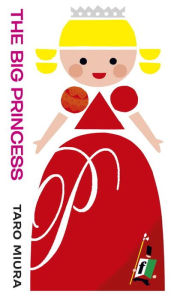




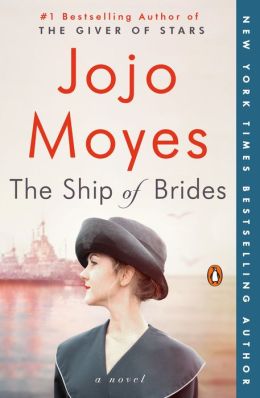

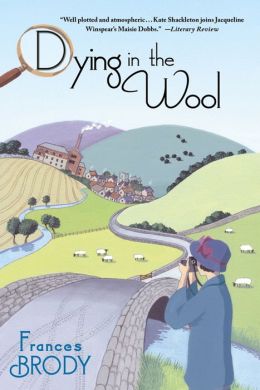

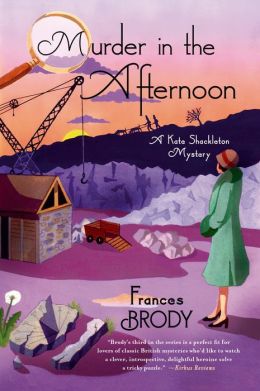

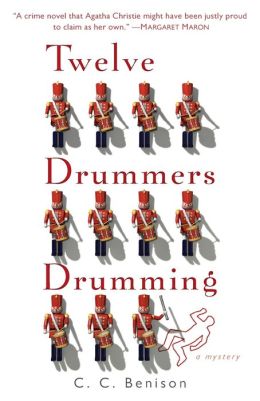
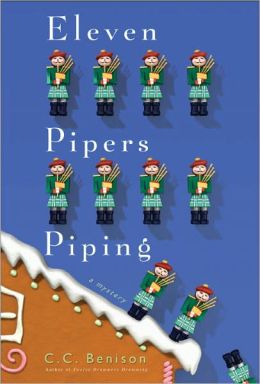
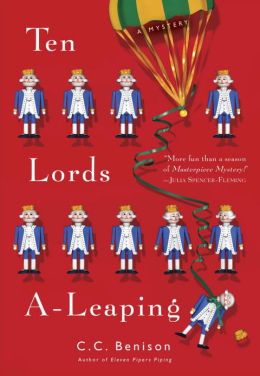
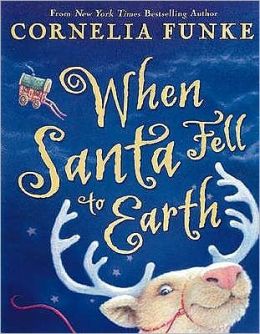
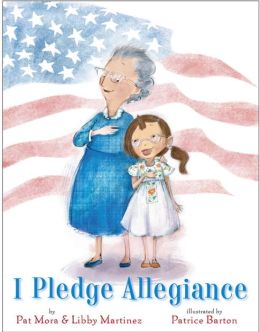

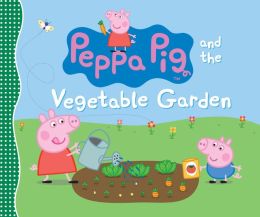
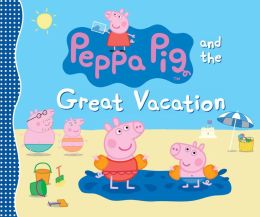
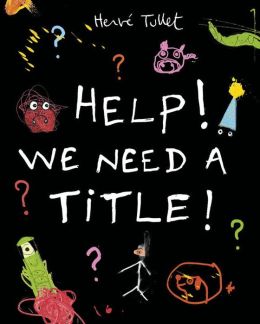
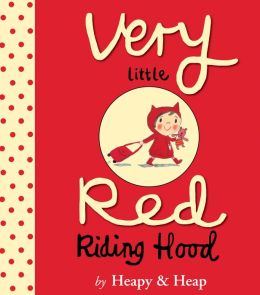

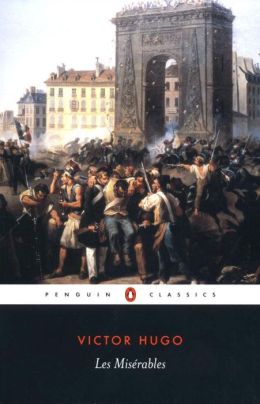

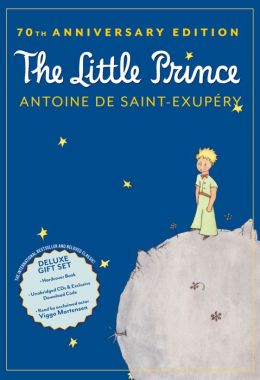
Cakes are the most important choices for celebrating occasions like birthdays, weddings, success and many other special days. Now you can Send Cakes to Thane with the impressive network and astonishing services of the www.cakesdeliverythane.com that has so many sections containing such a great variety of cakes.